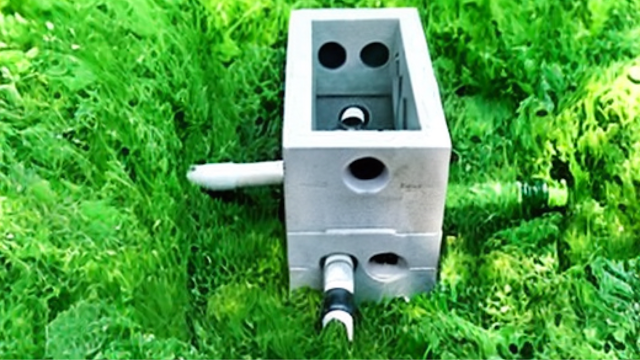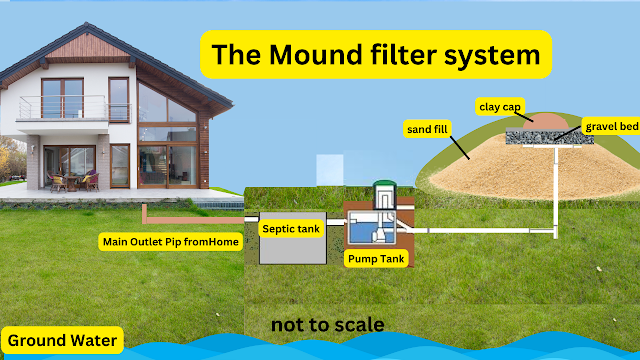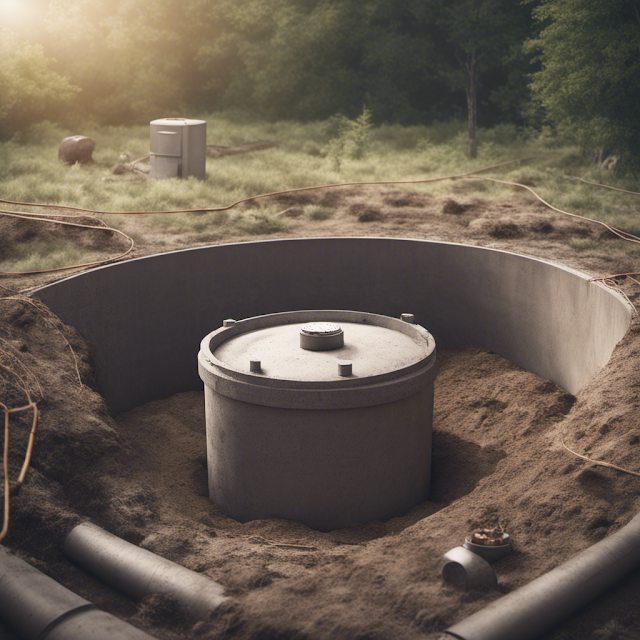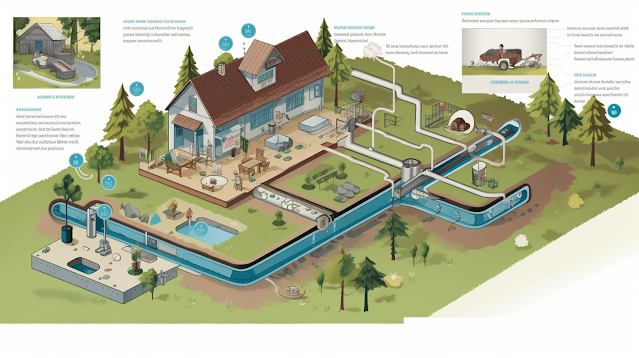Old Septic Tanks Design
Are you curious about the design and functionality of old septic tanks? If so, this article is for you.
We will explore the historical background, components, and structure of these tanks, as well as their efficiency and challenges posed by aging systems.
Additionally, we will emphasize the importance of proper maintenance and provide helpful tips for homeowners with old septic tank systems.
Get ready to gain a knowledgeable and reliable understanding of old septic tank design.
Historical Background of Old Septic Tank Design
You should begin by exploring the historical background of old septic tank design. Understanding the historical significance of these designs will provide valuable insights into the development and evolution of septic systems.
In the early days, septic tanks were simple structures made of concrete or steel, designed to collect and store wastewater. These early designs laid the foundation for the technological advancements that would come later.
As time progressed, new materials and construction techniques were introduced, allowing for improved durability and efficiency. Innovations such as the introduction of baffles and outlet filters helped enhance the performance of septic tanks.
These historical advancements ultimately paved the way for the more advanced and sophisticated septic tank systems we have today.
Now, let's delve into the components and structure of old septic tanks.
Components and Structure of Old Septic Tanks
The key components and overall structure of old septic tanks were relatively simple and straightforward. These tanks were typically made of concrete or metal, and consisted of two main parts: the tank itself and the drainage field.
The tank was responsible for holding and treating the wastewater, while the drainage field allowed the treated water to be safely absorbed into the ground. The tank had an inlet pipe where wastewater from the house would enter, and an outlet pipe where treated water would exit. Inside the tank, solid waste would settle at the bottom and form a layer of sludge, while lighter materials would float to the top and create a layer of scum.
Regular maintenance was necessary to ensure the proper functioning of these components, such as periodic pumping to remove accumulated solids and prevent blockages.
Functionality and Efficiency of Old Septic Tanks
When it comes to the functionality and efficiency of old septic tanks, it's important to consider the advancements that modern septic tank upgrades have made. These upgrades have significantly improved the performance and effectiveness of septic tanks, ensuring better waste management and reducing the risk of system failures.
Additionally, it's crucial to address the environmental impact of old septic tanks, as outdated designs may contribute to contamination of groundwater and surface water sources.
Modern Septic Tank Upgrades
If you're looking to improve the functionality and efficiency of your old septic tank, consider implementing modern septic tank upgrades. With advancements in modern technology and sustainability measures, these upgrades can greatly enhance the performance of your septic system.
One of the key upgrades is the installation of an effluent filter, which prevents solids from entering the drain field and prolongs the life of the system.
Another upgrade to consider is the addition of an aerator, which increases oxygen levels in the tank, promoting the growth of beneficial bacteria that break down waste more efficiently.
Additionally, installing a pump system can help move effluent from the tank to the drain field more effectively.
Environmental Impact of Old Tanks
Improve the functionality and efficiency of your old septic tank by considering its environmental impact.
Old septic tanks can have a significant impact on groundwater and pose potential health hazards if not properly maintained. As time goes by, these tanks may develop cracks or leaks, allowing untreated wastewater to seep into the surrounding soil and contaminate the groundwater. This can lead to the contamination of wells and other water sources, posing a risk to human health.
Additionally, old septic tanks may not be as efficient in treating wastewater as newer models, leading to the release of harmful pathogens and pollutants into the environment.
It's crucial to regularly inspect and maintain your old septic tank to prevent any negative environmental impacts and ensure the safety of your water supply.
Challenges Posed by Aging Septic Tank Systems
You may encounter numerous challenges when dealing with aging septic tank systems. As septic tanks age, they're more prone to problems and require more maintenance.
One of the main challenges is the deterioration of the tank itself. Over time, the concrete or steel material may corrode or crack, leading to leaks and potential contamination of the surrounding soil and water sources.
Another challenge is the accumulation of solid waste and sludge in the tank. As the tank gets older, it becomes less efficient in breaking down and disposing of waste, leading to clogs and backups in the system.
Additionally, aging septic tank systems may experience issues with the drain field. If the drain field becomes saturated or damaged, it can cause sewage to back up into the house or create foul odors in the yard.
To address these challenges, regular inspections, maintenance, and potentially tank replacements are necessary to ensure the proper functioning of aging septic tank systems.
Importance of Maintenance for Old Septic Tanks
Regular maintenance is crucial for the longevity and functionality of old septic tanks. As an experienced professional in the field, I can't stress enough the importance of inspection and professional maintenance for these aging systems.
Over time, septic tanks can develop various issues such as cracks, leaks, or blockages that can lead to serious problems if left unattended. By conducting regular inspections, professionals can identify these issues early on and take necessary measures to prevent further damage.
Additionally, professional maintenance involves tasks such as pumping out the tank, cleaning the drain field, and checking the overall system performance. These proactive measures not only extend the lifespan of the septic tank but also ensure the proper functioning of the entire system.
Now, let's move on to some valuable tips for homeowners with old septic tank systems.
Tips for Homeowners With Old Septic Tank Systems
As a homeowner with an old septic tank system, it's important to prioritize regular maintenance to ensure its proper functioning. Regular pumping and inspection can help prevent any potential issues and extend the lifespan of your septic tank.
Additionally, if your old septic tank system is constantly causing problems, it might be worth considering upgrading to a newer, more efficient system to avoid future headaches.
Maintenance for Old Tanks
When performing maintenance on old septic tank systems, it's important to regularly inspect and pump the tank to prevent potential issues. Regular maintenance is crucial to ensure the proper functioning of your old septic tank and avoid costly repairs. Here are some maintenance tips to help you keep your old septic tank in good condition.
Firstly, it's recommended to have your tank inspected every three to five years by a professional septic service provider. They can identify any potential problems early on and suggest appropriate solutions. Additionally, pumping the tank every three to five years is essential to remove accumulated solids and prevent clogging.
Common problems with old septic tanks include leaks, blockages, and backups. Regular maintenance can help to identify these issues and address them promptly. It's also important to avoid flushing non-biodegradable materials, excessive water usage, and chemical cleaners, as they can disrupt the balance of bacteria in the tank.
Upgrading Septic System
If you're considering upgrading your old septic tank system, but don't know where to start, then it's important to understand the options available to you.
Upgrading technologies have come a long way, offering homeowners with old septic tank systems a range of choices to improve their wastewater management.
One option is to install an aerobic treatment unit (ATU) which uses oxygen to break down the waste more efficiently.
Another option is a mound system, which is suitable for properties with high water tables.
Additionally, you may consider a drip irrigation system that disperses treated wastewater through a network of pipes.
When it comes to cost considerations, it's important to factor in not only the initial installation cost but also the ongoing maintenance and operational expenses.
Consulting with a professional septic system installer can help you determine the best upgrading option for your specific needs and budget.
Frequently Asked Questions
Can Old Septic Tanks Be Upgraded or Retrofitted to Meet Modern Standards?
Yes, old septic tanks can be upgraded or retrofitted to meet modern standards. Upgrading septic tanks involves improving their functionality, while retrofitting old tanks involves modifying them to comply with current regulations.
What Are Some Common Signs of a Failing Old Septic Tank System?
Signs of a failing septic tank system include slow drainage, sewage backups, foul odors, and lush patches of grass near the drain field. These issues indicate that your septic tank may need professional inspection and repair.
Are There Any Health Risks Associated With Using an Old Septic Tank System?
Using an old septic tank system can pose health risks due to potential leaks and contamination. Regular maintenance is crucial to prevent these issues. Ensure you address any concerns promptly to safeguard your well-being.
How Often Should a Professional Inspection and Pumping Be Conducted for Old Septic Tanks?
For old septic tanks, it is important to schedule regular professional inspections and pumping to ensure optimal performance. The frequency of these services will depend on various factors like tank size and usage.
Are There Any Government Regulations or Guidelines in Place for the Proper Disposal of Old Septic Tanks?
Government regulations and guidelines exist for the proper disposal of old septic tanks. It is essential to follow these rules to ensure the safe and environmentally friendly removal of the tanks.




.png)






Comments
Post a Comment